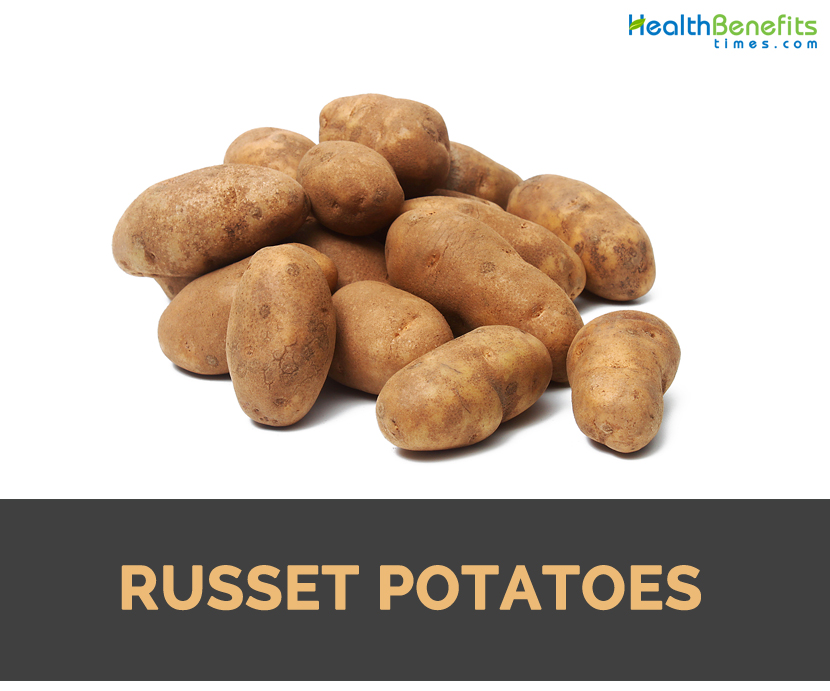Russet potato is a type of large potato which is usually oblong in shape with few eyes and dark brown skin. This potato is widely grown in North America. It has white flesh which is really dry and mealy that makes it suitable for baking, mashing and French fries. In United States, it is also known as Idaho potatoes. Sometimes it is known as baking potato or old potato. There are two varieties of Russet potatoes: Russet Burbank and Russet Norkotah. Russet Burbank is oblong in shape with light brown skin. It has white flesh that bakes up light and fluffy.
Origin
In order to upgrade the disease resistance of Irish potatoes, Luther Burbank selected potato which is known as Russet Burbank. It was not patented as the potatoes propagated from tubers were not authorized patents in United States.
Use
- Russet potatoes are used to make French fries.
- Due to high levels of starch, russet potatoes are used for mashing, baking, frying and roasted.
References:
https://en.wikipedia.org/wiki/Russet_potato
https://www.potatogoodness.com/russet-potatoes/
https://www.specialtyproduce.com/produce/Russet_Potatoes_7843.php
https://www.recipetips.com/kitchen-tips/t–826/all-about-potatoes.asp
Awesome
Comments
| Russet Potatoes Quick Facts | |
|---|---|
| Name: | Russet Potatoes |
| Colors | Brown |
| Shapes | Medium to large, oblong or slightly flattened oval |
| Flesh colors | Pale white |
| Taste | Mild, earthy |
| Calories | 284 Kcal./cup |
| Major nutrients | Vitamin B6 (81.38%) Carbohydrate (49.32%) Iron (40.00%) Copper (35.56%) Potassium (34.98%) |
| Name | Russet Potatoes |
|---|---|
| Flesh | Pale white, firm, dense |
| Shape | Medium to large, oblong or slightly flattened oval |
| Texture | Floury, dry, light and fluffy |
| Skin | Brown |
| Color | Yellow |
| Flavor | Mild, earthy, medium sugar content |
| Season | Early winter through late spring |
| Varieties |
|
| Major Nutritions | Vitamin B6 (Pyridoxine) 1.058 mg (81.38%) Carbohydrate 64.11 g (49.32%) Iron, Fe 3.2 mg (40.00%) Copper, Cu 0.32 mg (35.56%) Potassium, K 1644 mg (34.98%) Phosphorus, P 212 mg (30.29%) Manganese, Mn 0.682 mg (29.65%) Vitamin C (Ascorbic acid) 24.8 mg (27.56%) Vitamin B3 (Niacin) 4.031 mg (25.19%) Vitamin B5 (Pantothenic acid) 1.136 mg (22.72%) |
| Calories in 1 potato large (3″ to 4-1/4″ dia.), 299 g | 284 Kcal. |



